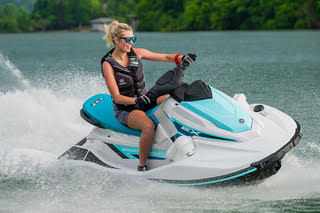New Ditch Kit for Boating Emergencies

Have safety and survival equipment all in one easy-to-access place.
Inspired by his own survival story, Scott Smiles developed Life Cell, a revolutionary floating safety device. So confident in its ability to save lives, the very organization that rescued him endorses it.
Two hours into a fishing trip five miles east of Sydney, Australia, Smiles noticed smoke coming from the exhaust of his new 42′ cruiser Intrepid. Investigating, he lifted the engine hatch and saw water pouring into the compartment. He called to his friend to put PFDs on their two 11-year old boys. Grabbing his EPIRB and a cooler for flotation, Smiles jumped into the water and joined the others. Within 50 seconds of seeing the flooding, the boat sank.
In minutes, they saw an airplane and passing vessel. But their flares and other signaling devices were on the boat, 200′ below. Their only hope was that the EPIRB would do its job and the cooler would keep them afloat.
Westpac Life Saver Rescue Helicopter Service (Westpac) received the distress beacon’s signal and scrambled two helicopters. Within an hour, they sighted the boys’ PFDs and dropped a life raft, due to conditions and safety concerns. Soon a police vessel brought them on board. A video of the dramatic rescue is at bit.ly/2kGzNGk.
Drawing upon everything he learned from the ordeal—the need for flotation, to stay together and be highly visible, and have safety and survival equipment all in one easy-to-access place—Smiles invented Life Cell.
SOLAS-approved, it’s engineered to assist up to eight adults, depending on the model. It holds important, user-supplied safety gear, including an EPIRB, flares, smoke, dye, whistle, horn, mirror, VHF radio and even water.
“I believe the Life Cell is an essential item on any vessel and have no doubt that lives will be saved as a result of this wonderful innovation,” said Stephen Leahy, Westpac CEO. “We share their vision in reducing the number of lives lost at sea.”
Life Cell can be thrown or, in the event of a sinking, it will float off its included mounting bracket. Once in the water, handles and lanyards keep people together. Open or closed, it maintains buoyancy. Available in white or high-visibility orange, it’s impact and UV-resistant. Only the safety and survival equipment inside needs maintenance and replacement. Four models are available, The Trailer Boat for 2-4 people, The Yachtsman for 4, The Trawler man for 6 and The Crewman for 8. They start at $299 and come with a two-year warranty.
The longest-serving search and rescue helicopter service in the world, Westpac is a community-based non-profit organization serving a large portion of New South Wales, Australia. It provides free service to both coastal and inland areas. Its website is www.lifesaver.org.au.
Contact Life Cell Marine Safety, PO Box 6601, Corindi Beach, NSW, Australia. info@lifecellmarine.com.au; www.lifecellmarine.com.
Editor’s note: See the entire Life Cell Marine Safety line and meet Scott Smiles at the Miami International Boat Show, Feb. 16–20, Booth E155.
Life Cell has been submitted for a Miami Innovation Award.




